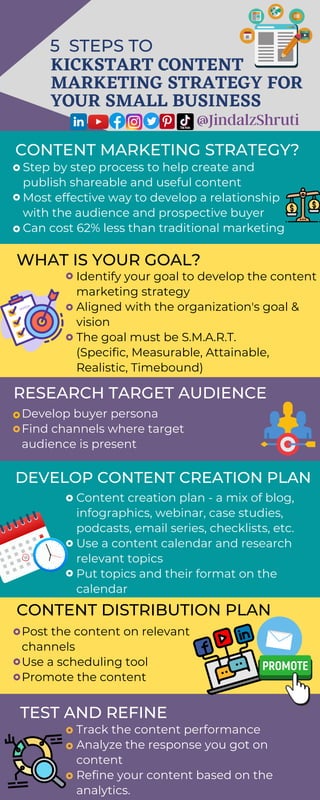Discover the hidden strategies that successful marketers use to skyrocket their sales and leave their competition in awe!

Image courtesy of Kampus Production via Pexels
Table of Contents
Effective marketing is at the core of any successful business. In today’s highly competitive landscape, it’s not enough to have a product or service – you need to have a solid marketing strategy to reach your target audience and create brand awareness. In this blog post, we will explore some valuable tips, tricks, and strategies that can take your marketing efforts to the next level.
Defining Your Target Audience
Understanding the importance of identifying your target audience: Before diving into marketing tactics, it is crucial to define your target audience. Understanding who your ideal customers are allows you to tailor your message and reach them more effectively. Take the time to analyze demographics, interests, and pain points to create a comprehensive profile of your audience.
Conducting market research to obtain insights: Market research provides valuable insights into your target audience’s preferences, behaviors, and buying patterns. Utilize surveys, focus groups, and online tools to gather data that will help refine your marketing strategy.
Creating buyer personas: Once you have collected the necessary data, create buyer personas – fictional representations of your ideal customers. These personas should contain details about their demographics, motivations, challenges, and goals. By bringing your audience to life through buyer personas, you can develop content and messaging that resonates with them.
Crafting Compelling Messaging
Developing a unique selling proposition (USP): A USP is the unique aspect of your business that sets you apart from your competitors. Articulate what makes your product or service special and why customers should choose you. Highlight the value and benefits you offer – the solutions you provide to their pain points.
Employing the power of storytelling to connect with your audience: Storytelling taps into human emotions and creates connections. Craft narratives that engage your audience and make them feel a personal connection to your brand. Share stories of customers who have benefited from your product or highlight your company’s journey and mission to create an emotional bond with your audience.
Emphasizing the benefits and solving pain points: Focus on the benefits your product or service delivers, rather than just features. Highlight how it will solve your customers’ problems and make their lives easier. Address their pain points and position your brand as the solution they’ve been searching for.
Leveraging the Power of Content Marketing
Creating informative and engaging blog posts: Blogging is a highly effective content marketing tactic that allows you to provide valuable information to your audience. Craft blog posts that educate, entertain, and inspire your readers. Incorporate industry insights, tips, and shareable content to increase engagement and establish your authority in the field.

Image courtesy of via Google Images
Producing high-quality videos and podcasts: Visual and auditory content has become increasingly popular. Invest in creating videos and podcasts that align with your brand and resonate with your target audience. These formats allow you to convey information in an engaging way, fostering deeper connections with your customers.
Utilizing social media platforms effectively: Social media is an indispensable tool for marketers today. Understand which platforms your target audience prefers and develop a strong online presence on those channels. Engage with your followers, share valuable content, and leverage social media advertising to increase your reach and drive conversions.
Expanding your reach through guest blogging: Collaborating with influencers and guest blogging on relevant platforms widens your reach and establishes you as an industry thought leader. Identify reputable blogs and websites that your target audience frequents and contribute high-quality guest posts with valuable insights and information.
Maximizing SEO Strategies
Utilizing keyword research to optimize your website: Conduct thorough keyword research to identify relevant search terms and phrases. Incorporate these keywords strategically in your website content, meta tags, and URLs to improve your search engine rankings and visibility.
Implementing on-page SEO techniques, including meta tags and rich snippets: Optimize your website’s on-page elements, such as title tags, meta descriptions, headers, and image alt tags. Make your content more attractive in search results by using rich snippets, which enhance the appearance of your listings with additional information, such as star ratings or product information.
Building high-quality backlinks: Backlinks are crucial for SEO success. Focus on obtaining high-quality backlinks from reputable websites in your industry. These links not only drive traffic to your site but also improve your website’s authority in the eyes of search engines.
Harnessing the Potential of Email Marketing
Building an email list and segmenting it for targeted campaigns: Email marketing remains an effective way to nurture leads and generate conversions. Focus on growing your email list organically and segment it based on demographics, preferences, or buying behavior. Sending personalized, relevant email campaigns will yield higher engagement and conversions.

Image courtesy of via Google Images
Designing captivating newsletters and email templates: Craft visually appealing and mobile-responsive newsletters and email templates that grab the attention of your subscribers. Incorporate engaging content, compelling images, and clear calls-to-action to drive conversions.
Personalizing emails for higher engagement: Personalization is key to effective email marketing. Use merge tags to address subscribers by name and segment your email campaigns based on their interests or previous interactions. Tailor your messages to create a sense of exclusivity and increase engagement.
Analyzing email campaign metrics for continuous improvement: Regularly analyze your email campaign metrics, including open rates, click-through rates, and conversion rates. Use this data to identify areas of improvement and optimize future campaigns for higher engagement and better results.
Harnessing the Power of Influencer Marketing
Identifying and collaborating with relevant influencers in your industry: Influencer marketing allows you to tap into established audiences and gain credibility in your niche. Identify influencers who align with your brand’s values and have a strong following among your target audience.
Negotiating mutually beneficial partnerships: When approaching influencers, establish a win-win collaboration. Offer value in exchange for their endorsement or promotion, such as exclusive discounts, free products, or exposure to your own audience. Ensure the partnership is authentic and benefits both parties.
Measuring the impact and ROI of your influencer marketing efforts: Use tracking links and unique discount codes to measure the impact of influencer campaigns. Monitor metrics such as referral traffic, conversions, and social media engagement to evaluate the success of your collaborations and make data-driven decisions for future influencer marketing initiatives.
Embracing Data Analytics and Tracking
Utilizing tools like Google Analytics to track website performance: Implement tracking codes on your website, such as Google Analytics, to monitor user behavior, traffic sources, and conversions. Gain insights into which marketing channels and campaigns are most effective, allowing you to allocate resources strategically.

Image courtesy of via Google Images
Monitoring social media metrics and engagement: Social media platforms provide analytics dashboards that offer valuable insights into engagement, reach, and audience demographics. Regularly analyze these metrics to understand how your content resonates with your audience and adjust your strategy accordingly.
Gaining insights from customer feedback and reviews: Customer feedback is a treasure trove of insights. Encourage customers to provide feedback and reviews, whether through surveys, reviews websites, or social media. Analyze this feedback to identify areas for improvement and address customer pain points.
Continuously optimizing your strategy based on data-driven decisions: Use the insights gained from your data analytics efforts to refine and optimize your marketing strategy. Continuously monitor performance, experiment with new tactics, and iterate based on the feedback and data you obtain.
Conclusion
Implementing effective marketing strategies requires dedication, research, and continuous improvement. By understanding your target audience, crafting compelling messaging, leveraging content marketing, optimizing your website for search engines, utilizing email marketing, tapping into influencer partnerships, and embracing data analytics, you can take your marketing efforts to new heights. Remember, each business is unique, so experiment with different strategies and tactics to find what works best for your brand. Stay adaptable, keep learning, and always strive for excellence in your marketing endeavors.